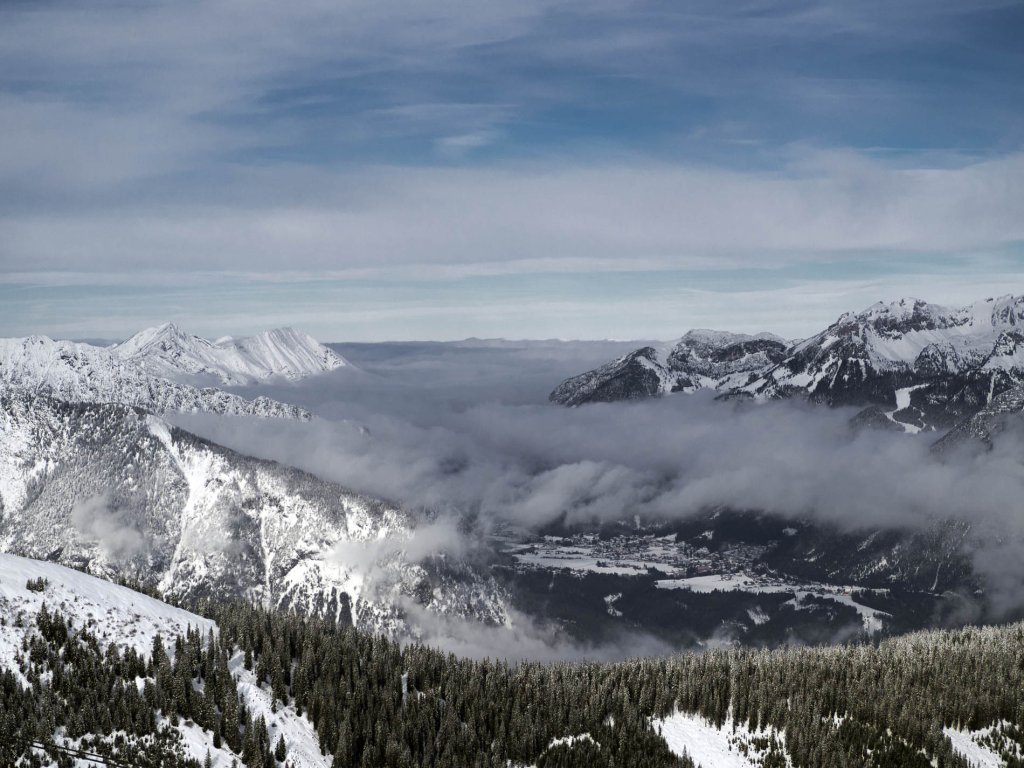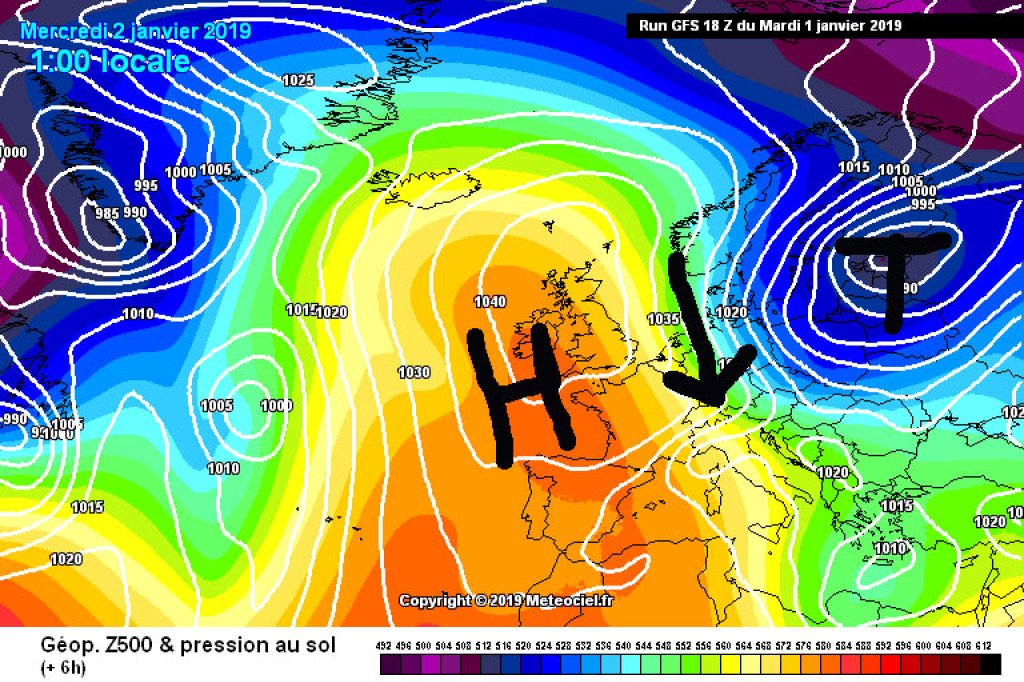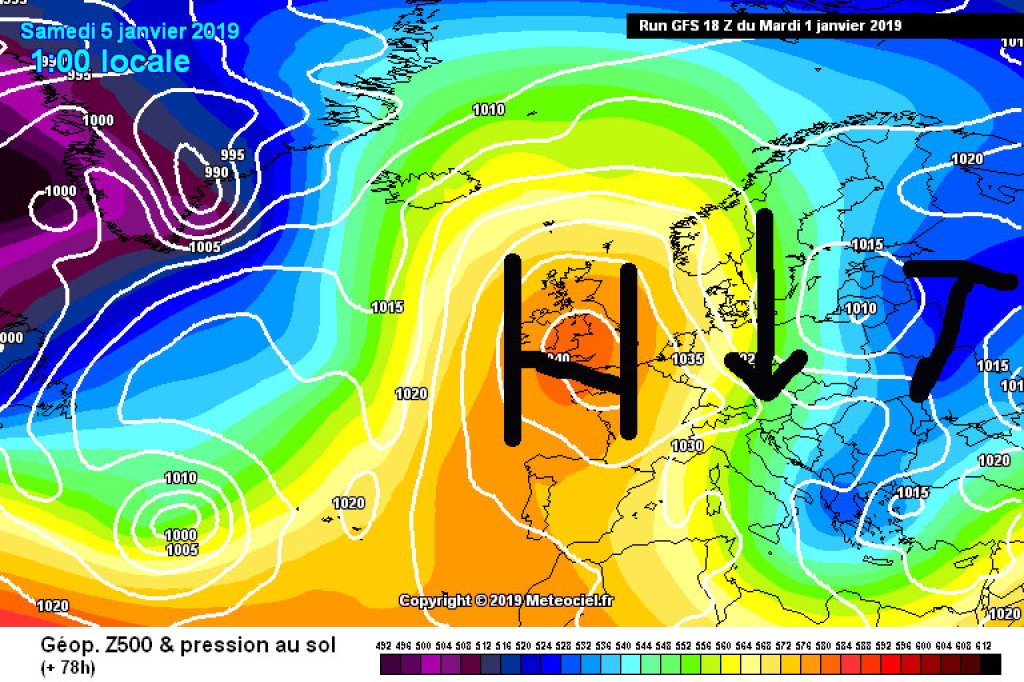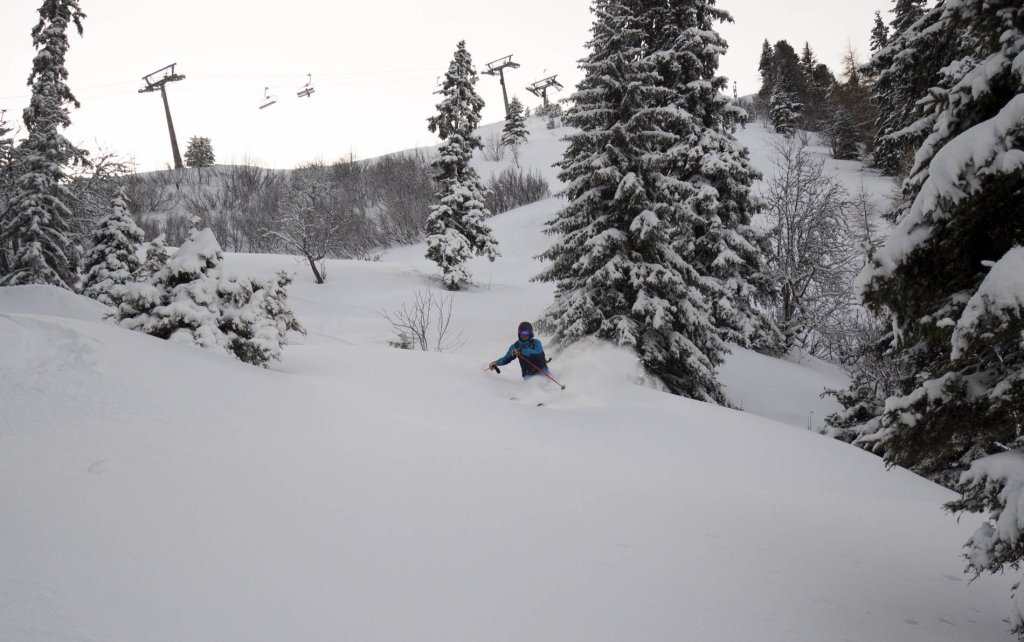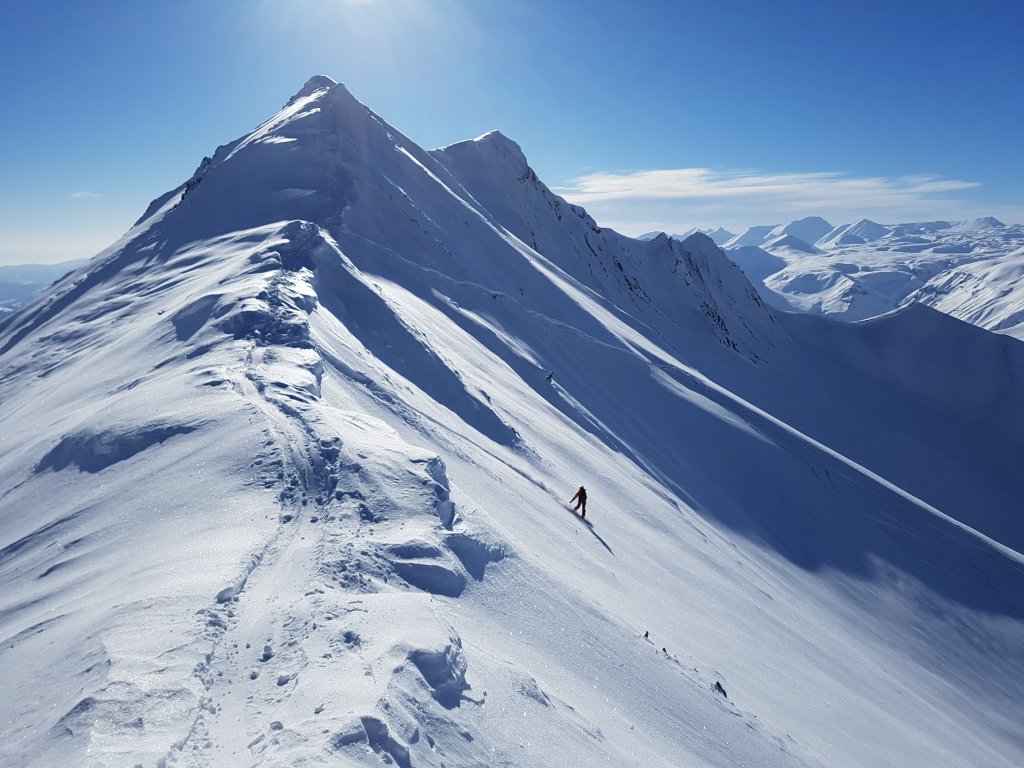Current situation and outlook
As is well known, the Alps like to be divided into east and west, usually roughly along an imaginary line between Lake Constance and Lake Como. The weather is also taking part in the east-west division this week, although the meteorological dividing line runs a little further east than the geographical one:
A blocking high over Western Europe and the British Isles is currently cutting the Alps off from the Atlantic westerly drift. Between the high and a low with a core somewhere over the Baltic, cold polar air is flowing south in a tight northerly flow. The eastern Alps are getting the cold and quite humid air, while the western Alps are dominated by the high with bright sunshine.
